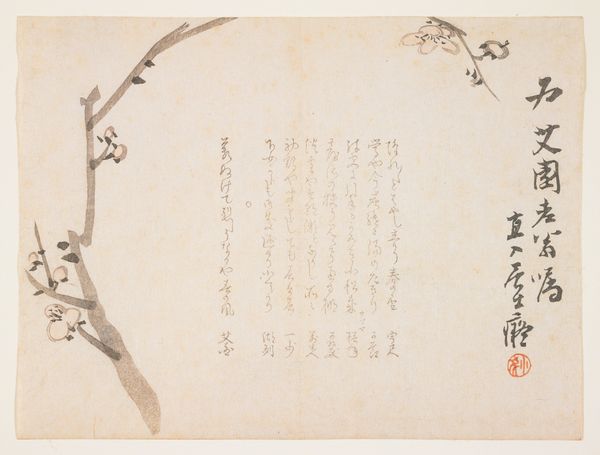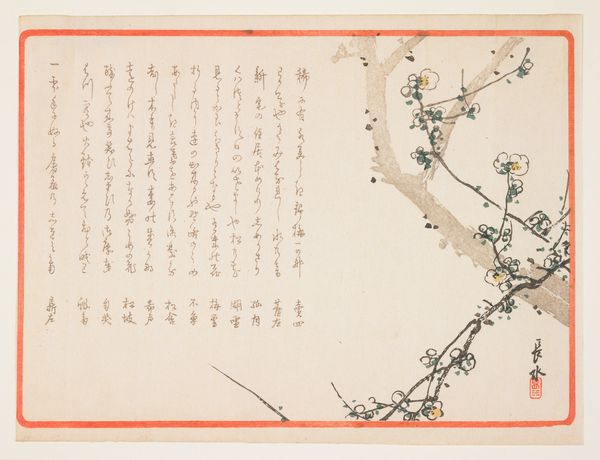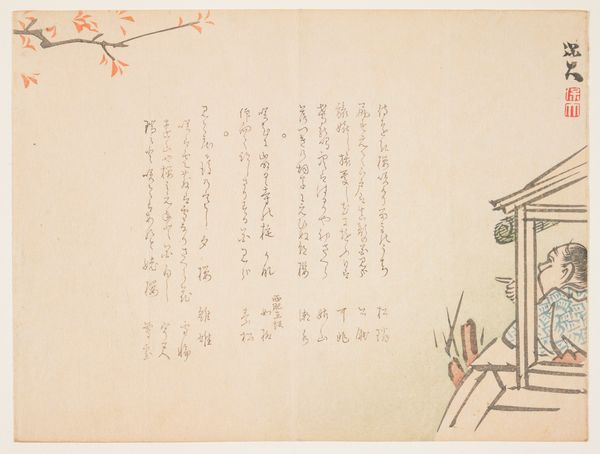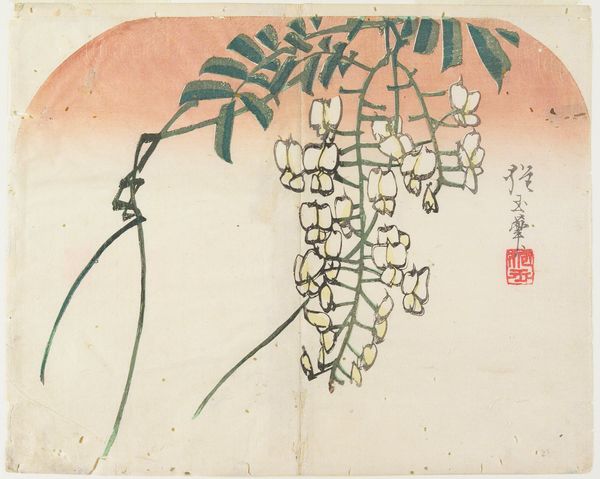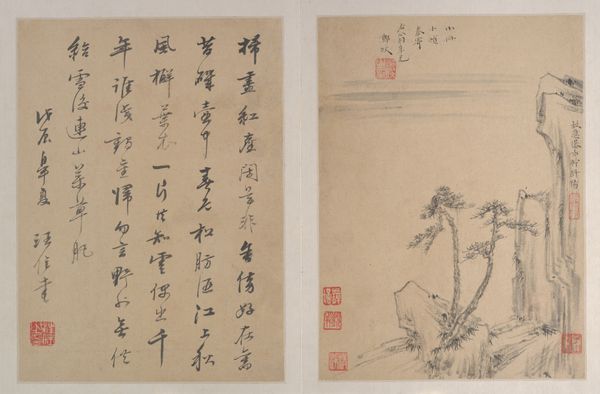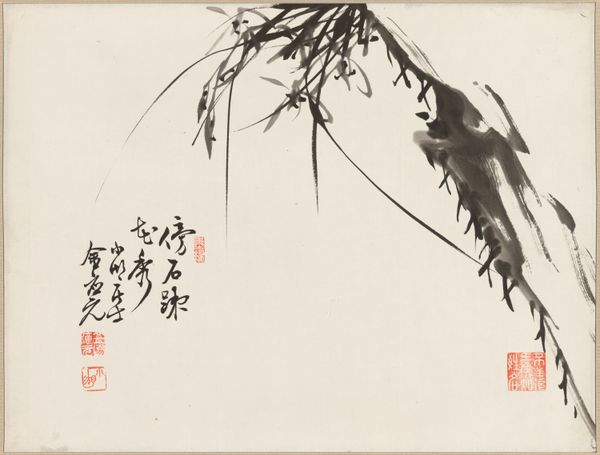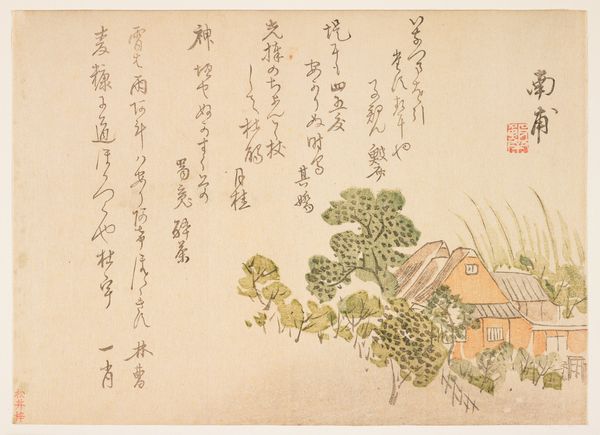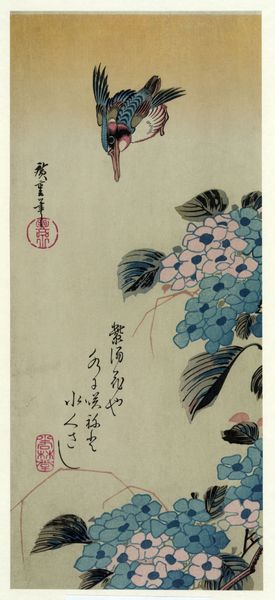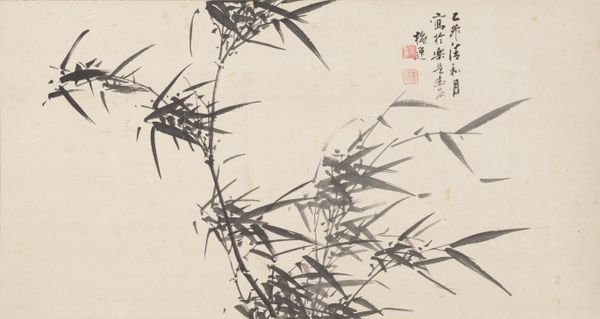
#
toned paper
#
water colours
#
ink paper printed
# print
#
asian-art
#
japan
#
handmade artwork painting
#
linocut print
#
watercolour bleed
#
watercolour illustration
#
sketchbook art
#
botanical art
#
watercolor
Dimensions: 11.4 × 9.2 cm
Copyright: Public Domain
Curator: This charming print, likely crafted in the 1850s, is titled "Bamboo and Wreath," and the artist is Maezawa Otei. It resides here at the Art Institute of Chicago. Editor: The muted palette strikes me first, a harmonious blend of yellow, green, and gray. There is an ethereal, almost dreamlike quality to its composition. Curator: Woodblock prints such as this were crucial to disseminating imagery widely in Edo-period Japan. This aesthetic helped to promote literacy and influence popular culture. The imagery here, bamboo and wreath, may point towards longevity and celebration. Wreaths were hung to demarcate sacred spaces or signal a change in season. Editor: Note how the artist utilized ink bleeds to create softer edges. This technique contributes significantly to the delicate feeling of transience I mentioned earlier. It is more atmospheric, perhaps, than definitive in its forms. Curator: Indeed. Prints were affordable and could cater to a wide range of audiences. Maezawa's piece possibly became popular because these decorations mirrored societal interests and trends in presenting domestic spaces, blending artistry with everyday life. Editor: And consider the deliberate placement of text alongside the natural elements. The calligraphy isn't merely decorative; it interacts with the composition, almost like another set of branches extending across the page. Curator: Precisely. The placement and style of text were integral, indicating not just artistic skill but also the level of the work’s integration into literate culture and potential value for scholarly viewers and buyers. The inscription also personalizes this image and perhaps alludes to the auspicious wishes it means to carry. Editor: Overall, this print whispers rather than shouts. The arrangement creates an understated elegance—everything works together: the controlled ink application, thoughtful text placement, and serene botanical subjects. Curator: And that whispering offers us a rare glimpse into the cultural ethos of mid-19th-century Japan. By dissecting these compositions and motifs, we uncover how societal practices were visually represented, communicated, and valued within communities. Editor: Agreed; its beauty lies not only in form but in its delicate capture of a specific moment in time.
Comments
No comments
Be the first to comment and join the conversation on the ultimate creative platform.
